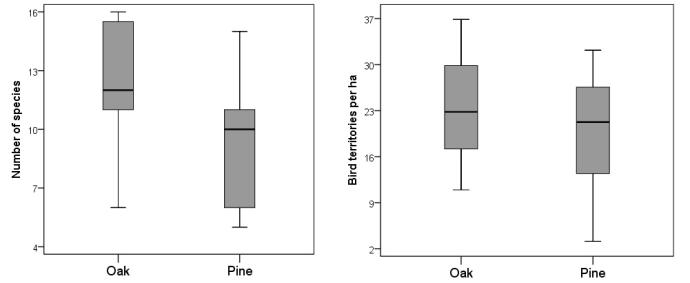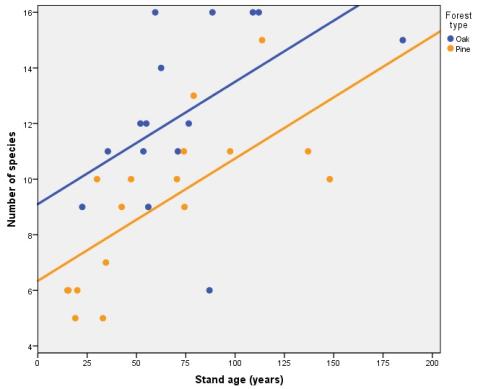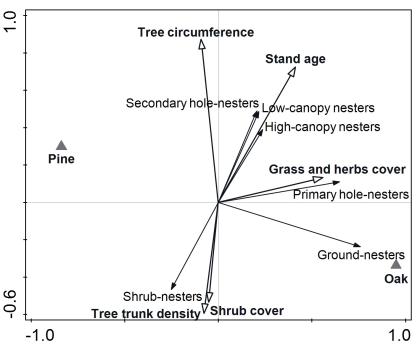Results
The oak forest stands (n=15) supported 1119 territories of 35 bird species and pine forest stands (n=17) supported 1078 territories of 30 bird species. In total, 40 bird species were registered in the surveyed forest habitats. Out of these, 25 species were found in both forest types, ten species were exclusive to oak stands and five species were exclusive to pine stands. Oak stands supported a higher bird species richness and diversity than pine stands of similar age. There were, however, no significant differences in the density of bird territories between stands of oak and pine.


The associations between forest age and bird species richness was tested by fitting a generalized linear model to the relationship. For both oak and pine, clear positive relationships between the stand age and the number of bird species a forest supported was found.

The associations between bird guilds and environmental variables were displayed using a multivariate redundancy analysis (RDA) ordination. It showed that different guilds were associated with different environmental variables, as hypothesized when classifying species into nesting guilds. Stand age explained the abundance of three out of six guilds, and was found to be the most important factor explaining the differences in bird assembly structure between forests of different type and attributes. Shrub-nesters were associated with high densities of tree trunks and shrubs in the forest understory. Ground-nesters and primary hole-nesters pointed towards a higher association with oak than pine. A generalized linear model also showed that the abundance of birds belonging to these guilds were significantly higher in oak stands than in pine stands.
Responsible for this page:
Director of undergraduate studies Biology
Last updated:
06/05/14
